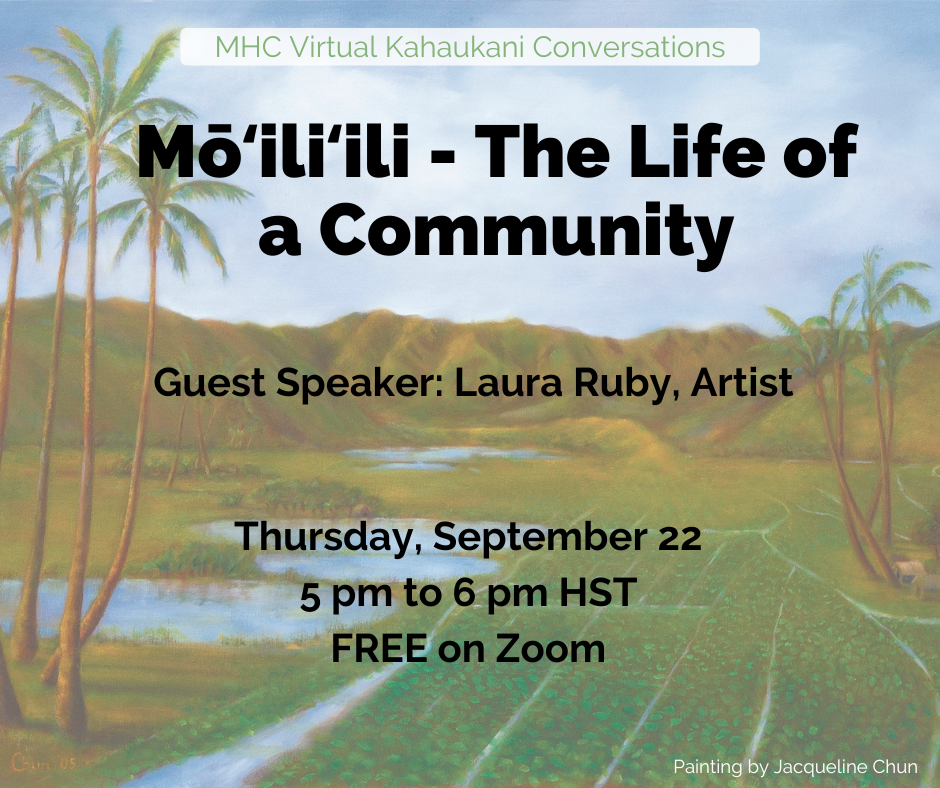Virtual Kahaukani Conversations – Moʻiliʻili

As editor of the book Mō‘ili‘ili -The Life of a Community, artist Laura Ruby will talk about the vibrant community first named Waikīkī Waena, then Kamoiliili, and today known as Mō‘ili‘ili. The story of Mōʻiliʻili begins with the ancient Hawaiians and their concept of ahupuaʻa (land division), which incorporated the notion of balance in the use of land and sea, along with their system of shared water for a community’s farming needs that initiated the cohesion of individual residents into the wholeness of a community. The Hawaiians identified Mōʻiliʻili as an integral part of Waikīkī Waena, the middle land between the ocean and the mountains, and recognized its extraordinary agricultural opportunities.
They shared Mōʻiliʻili with incoming Chinese, Japanese, and Portuguese laborers who had left sugar plantations to seek better lives. Many of these newcomers came to work in the Quarry that produced blue lava rock, the primary building material used for the expansion of urban Honolulu. Over time, the multi-ethnic Mōʻiliʻili community embraced a unifying vision of the common good of its people. Its religious institutions: the Kamoiliili Church, Mōʻiliʻili Hongwanji Mission, and Church of the Crossroads, and its educational institutions: Kūhiō School and the Mōʻiliʻili Japanese Language School and Mōʻiliʻili Community Center, all function as venues for spirituality, education, social services, and leisure.
Today Mōʻiliʻili is a vibrant Hawaiian community on the Island of Oʻahu in the City and County of Honolulu. Click below to register and learn more about this dynamic community!
Kahaukani Conversations is made possible with support from:
Hawaiʻi Tourism Authority’s Kūkulu Ola Program, administered by the Hawaiʻi Community Foundation
